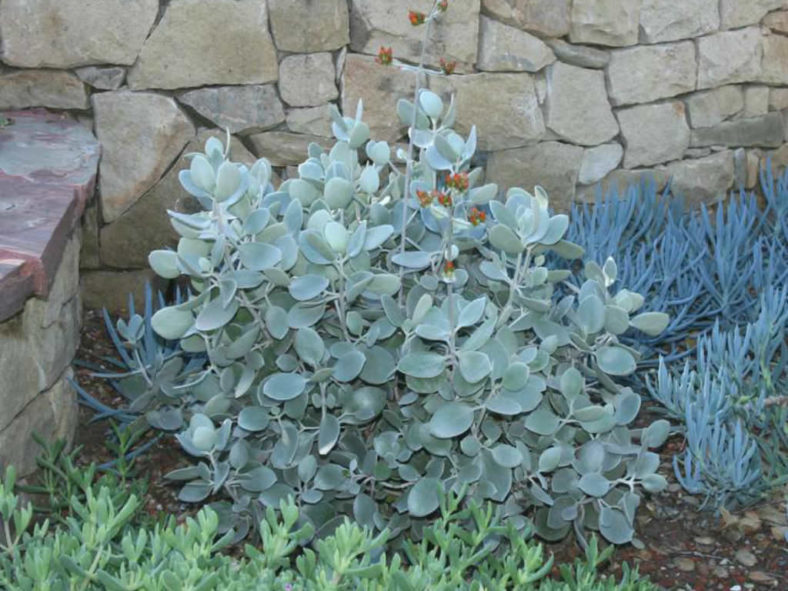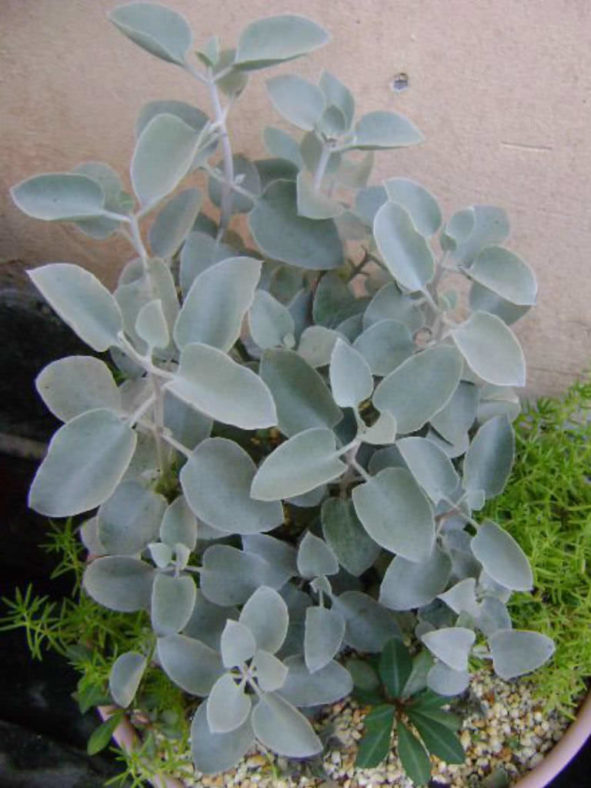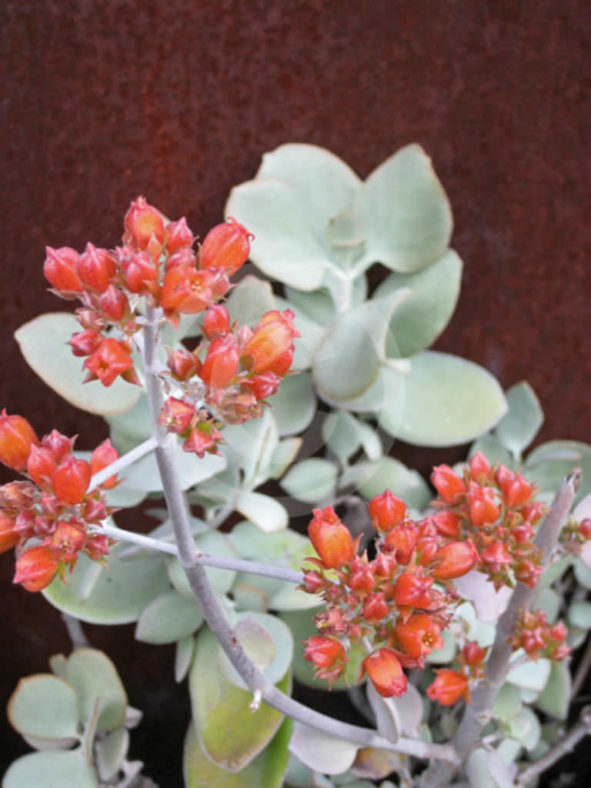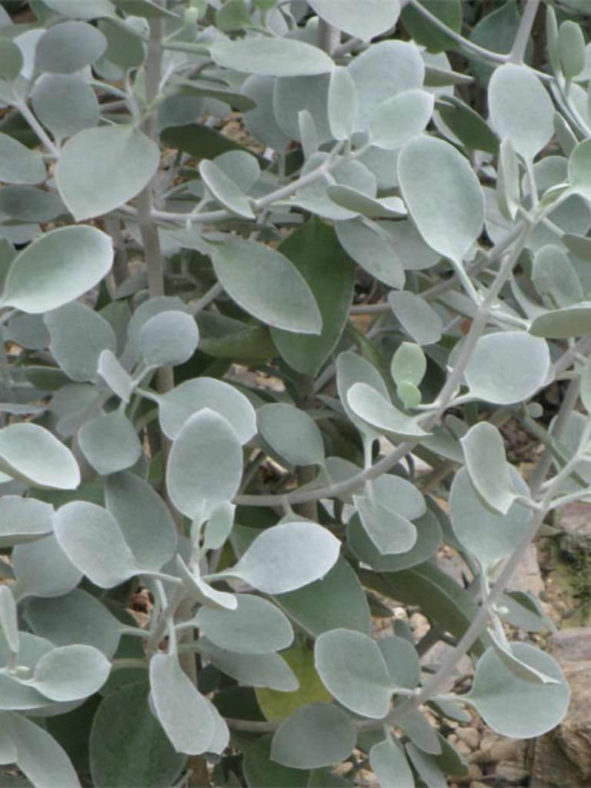Scientific Name
Kalanchoe bracteata Scott-Elliot
Common Name(s)
Silver Spoons, Silver Teaspoons
Synonym(s)
Kalanchoe bracteata var. bracteata
Scientific Classification
Family: Crassulaceae
Subfamily: Sedoideae
Tribe: Kalanchoeae
Genus: Kalanchoe
Origin
Kalanchoe bracteata is native to south-eastern Madagascar. It grows as a xerophytic shrub on various soils and rocks.
Description
Kalanchoe bracteata is a succulent shrub with woody, densely branched stems that bear fleshy, greyish-silvery-white to olive-green leaves. It can grow up to 5 feet (1.5 m) tall. The stems and leaves are clothed with characteristic short hairs and covered with a waxy secretion, resulting in a glabrous appearance. The young branches are obscurely 4-angled. The leaves are elliptic to oblanceolate, with a short petiole and slightly pointed at the tip, measuring up to 2.8 inches (7 cm) long and 1.6 inches (4 cm) wide.
The flowers appear arranged in cymes in summer.
Typical Kalanchoe bracteata has a silvery pubescence, but there are varieties with smooth leaves. Kalanchoe orgyalis and Kalanchoe bracteata look similar and are sometimes mistaken for each other. Their flowers distinguish them, but the pubescence of Kalanchoe bracteata can be identified by its 3-angled two-lobed hairs. Kalanchoe hildebrandtii is another close species distinguished by stalkless leaves and small white, pale green to yellow flowers. The flowers of Kalanchoe orgyalis are yellow with greenish lobes, while those of Kalanchoe bracteata are red or orange-red. Kalanchoe bracteata forms plantlets on the flower stem.

Hardiness
USDA hardiness zones 9b to 11b: from 25 °F (−3.9 °C) to 50 °F (+10 °C).
How to Grow and Care
Kalanchoe care is minimal, but be cautious about light levels. Intense sunlight can burn the tips of the leaves. Place pots in partial sun to light shade areas when growing Kalanchoes.
The flowering varieties are highly rewarding for their colorful and long-lasting flowers. They prefer bright, sunny locations, especially in the growing season. Water moderately from fall to winter when the growth is most active. Reduce watering during the hottest summer months when the plants are mostly dormant and winter when the growth slows significantly. Let the soil surface dry out between waterings. Watch the fleshy leaves for signs of water distress. An ordinary potting soil mix is fine. Feed bi-weekly during the growing season with a liquid fertilizer, or use slow-release pellets.
These small plants require repotting every few years. When repotting, take additional care in handling as the leaves are somewhat brittle and can snap easily. Clay pots work exceptionally well for planting Kalanchoes. Ensure pots can drain well and saucers can empty quickly.
Learn more at How to Grow and Care for Kalanchoe.
Links
- Back to genus Kalanchoe
- Succupedia: Browse succulents by Scientific Name, Common Name, Genus, Family, USDA Hardiness Zone, Origin, or cacti by Genus
Photo Gallery
Click on a photo to see a larger version.



